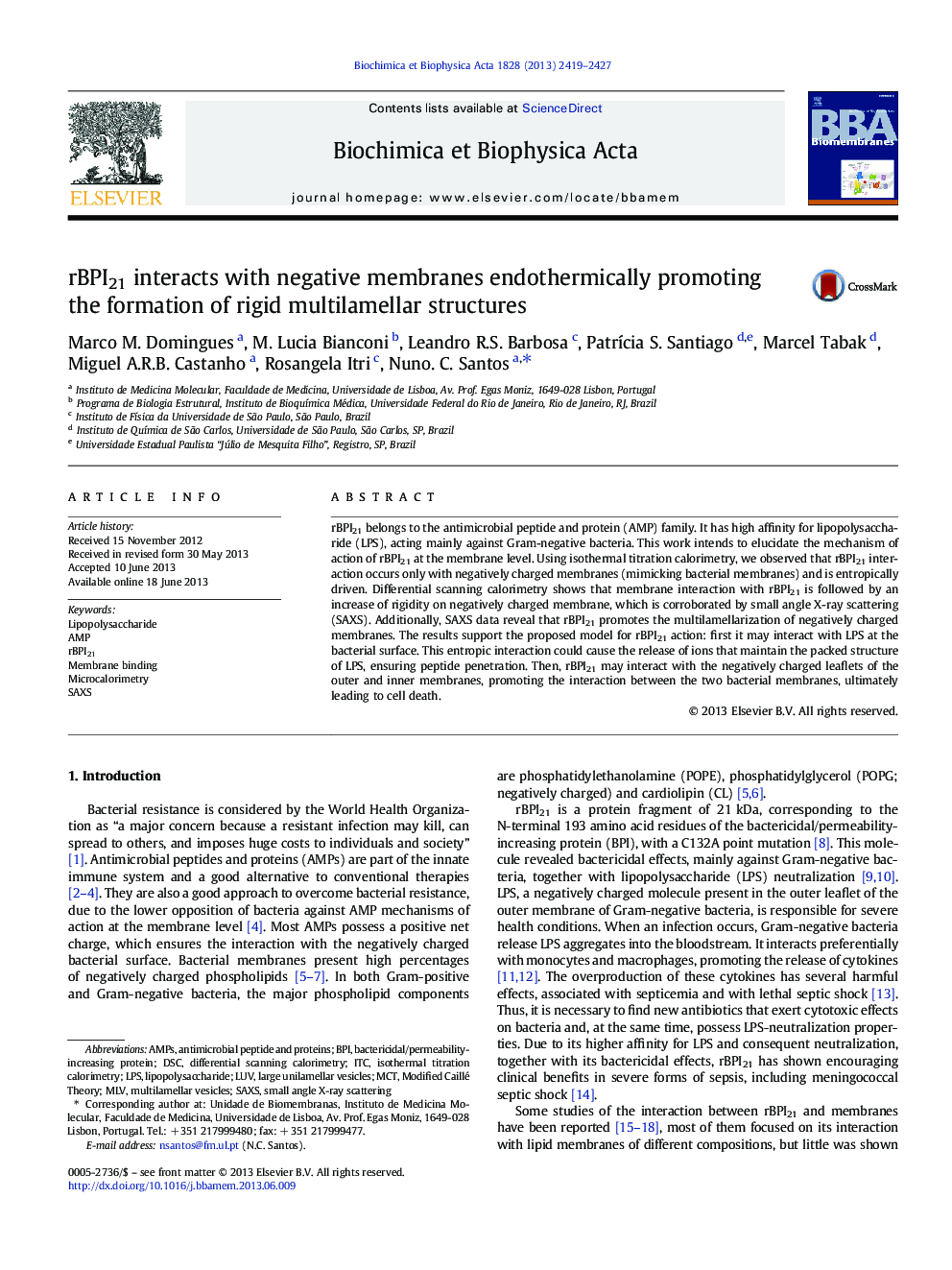| Article ID | Journal | Published Year | Pages | File Type |
|---|---|---|---|---|
| 1944286 | Biochimica et Biophysica Acta (BBA) - Biomembranes | 2013 | 9 Pages |
•Development of antibacterial proteins is crucial to overcome bacterial resistance.•rBPI21 associates with LPS in an entropically driven manner.•rBPI21 promotes the formation of multilamellar membrane structures.•rBPI21 interacts with negatively charged membranes.•We propose the mechanism of action of rBPI21 in Gram-negative bacteria.
rBPI21 belongs to the antimicrobial peptide and protein (AMP) family. It has high affinity for lipopolysaccharide (LPS), acting mainly against Gram-negative bacteria. This work intends to elucidate the mechanism of action of rBPI21 at the membrane level. Using isothermal titration calorimetry, we observed that rBPI21 interaction occurs only with negatively charged membranes (mimicking bacterial membranes) and is entropically driven. Differential scanning calorimetry shows that membrane interaction with rBPI21 is followed by an increase of rigidity on negatively charged membrane, which is corroborated by small angle X-ray scattering (SAXS). Additionally, SAXS data reveal that rBPI21 promotes the multilamellarization of negatively charged membranes. The results support the proposed model for rBPI21 action: first it may interact with LPS at the bacterial surface. This entropic interaction could cause the release of ions that maintain the packed structure of LPS, ensuring peptide penetration. Then, rBPI21 may interact with the negatively charged leaflets of the outer and inner membranes, promoting the interaction between the two bacterial membranes, ultimately leading to cell death.
Graphical abstractFigure optionsDownload full-size imageDownload high-quality image (164 K)Download as PowerPoint slide
